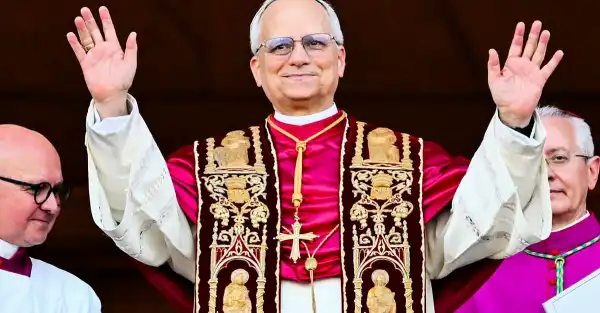
Cardinal Robert Prevost may have been the first American to lead the Catholic Church, but his unexpected election by cardinals from around the world to become Pope Leo XIV may have been due not only to his birthplace but also to his previous place of service.
Prevost, relatively unknown on the international stage, spent two decades as a missionary in Peru and was only appointed a senior Vatican official and cardinal in 2023.
His first assignment as a bishop was in Chiclayo in northwestern Peru, where he served from 2015 to 2023.
For the 133 cardinals gathered in conclave in the Sistine Chapel to choose a successor to Pope Francis, an Argentine and the first pontiff from the Americas, that was likely a significant factor.
“For us, he is the second Latin American pope,” Fernando Morales de la Cruz, a Guatemalan human rights activist, told Reuters. Prevost holds dual U.S. and Peruvian citizenship.
However, unlike Francis, who became pope in 2013 after years of serving as a local bishop and had no Vatican experience, Prevost was not a completely outside candidate.
Vatican Office
For the past two years, he has headed the powerful Vatican office responsible for appointing priests as Catholic bishops around the world. He has also participated in two Vatican assemblies of world bishops convened by Francis in 2023 and 2024.
His vast experience puts him in a position to address some of the big issues facing the 1.4 billion-member Church, and many cardinals are already familiar with him.
Given the closed nature of the conclave, little is currently known about the mood of the cardinal electors or how their votes went before they made their choice on Thursday.
Still, some analysts have their own theories, including how Prevost managed to achieve what was previously considered unlikely: a US cardinal becoming Pope.
“Before the conclave, American cardinals thought that U.S. citizenship might be an issue,” said Michael Sean Winters, an American commentator who has closely followed events in the Vatican.
However, the cardinals concluded that Prevost’s citizenship, given his experience in Latin America, “does not constitute an insurmountable obstacle,” he added.
“They needed someone who had credibility with the other cardinals and who was committed to continuing Francis’s reforms,” Mr. Winters said. “And more than any other contender for the papacy, Prevost had both.”
During Donald Trump’s second term in the United States, cardinals may have realized for the first time the real value of electing another American as pope.
Francis has been a sharp critic of Mr Trump, saying earlier this year that the president’s plan to deport millions of migrants from the US was a “disgrace”.
“As for the reasons why the cardinals chose (Prevost), I wonder if the desire for ‘a different kind of American leader’ was part of the discernment process,” said Natalia Imperatori-Lee, an American scholar and Catholic expert at Manhattan University in New York.
Quick Conclave
At the conclave on Wednesday, two other cardinals stood out among the main favorites: Italian Pietro Parolin and Filipino Luis Antonio Tagle.
Cardinals vote in the conclave once on the first day and four times on the following days.
When white smoke rose from the Sistine Chapel chimney at 4:08 p.m. on Thursday, signaling the election of a new pope, many observers speculated that it might be either Parolin or Tagle.
The timing of the smoke indicated that the new pope was likely elected on the fourth ballot of the conclave, a quick result. Francis was elected on the fifth ballot of the conclave in 2013.
In 1978
Sourse: breakingnews.ie